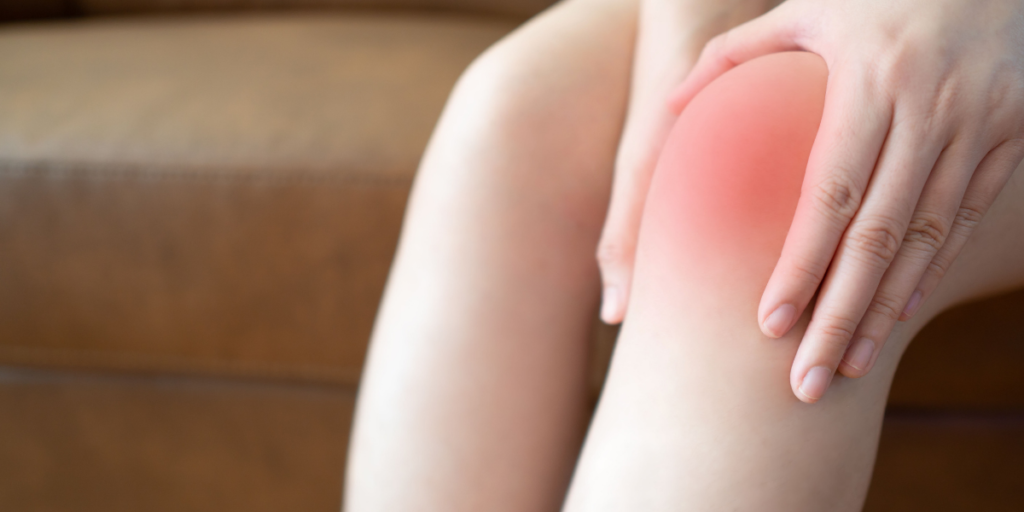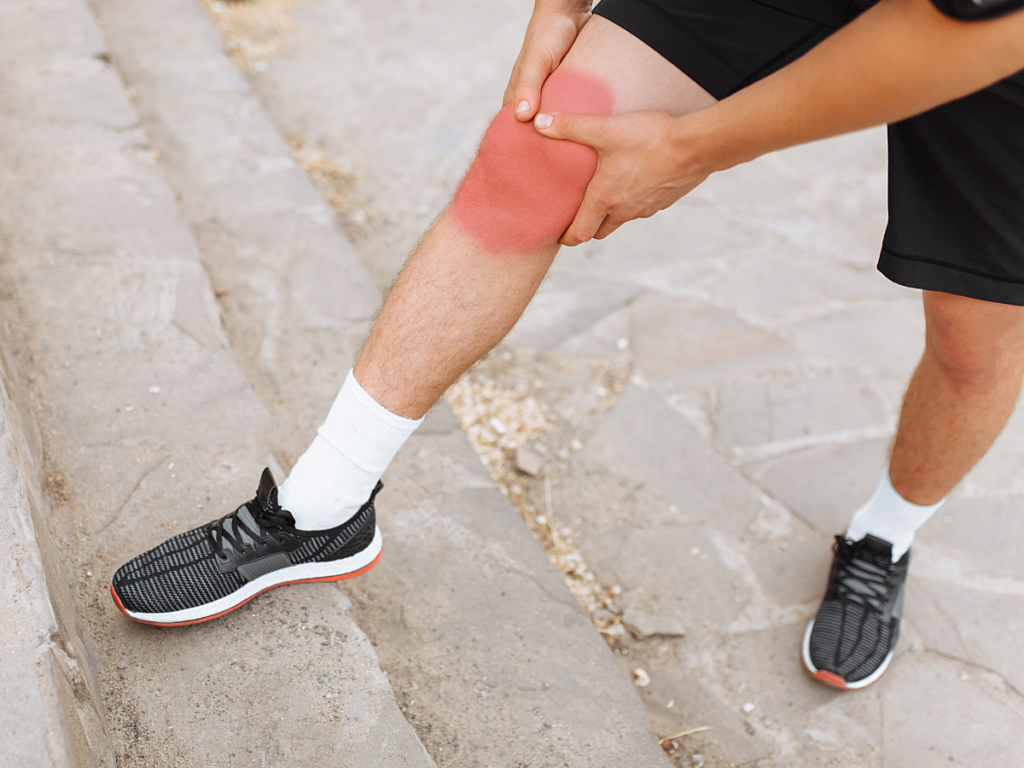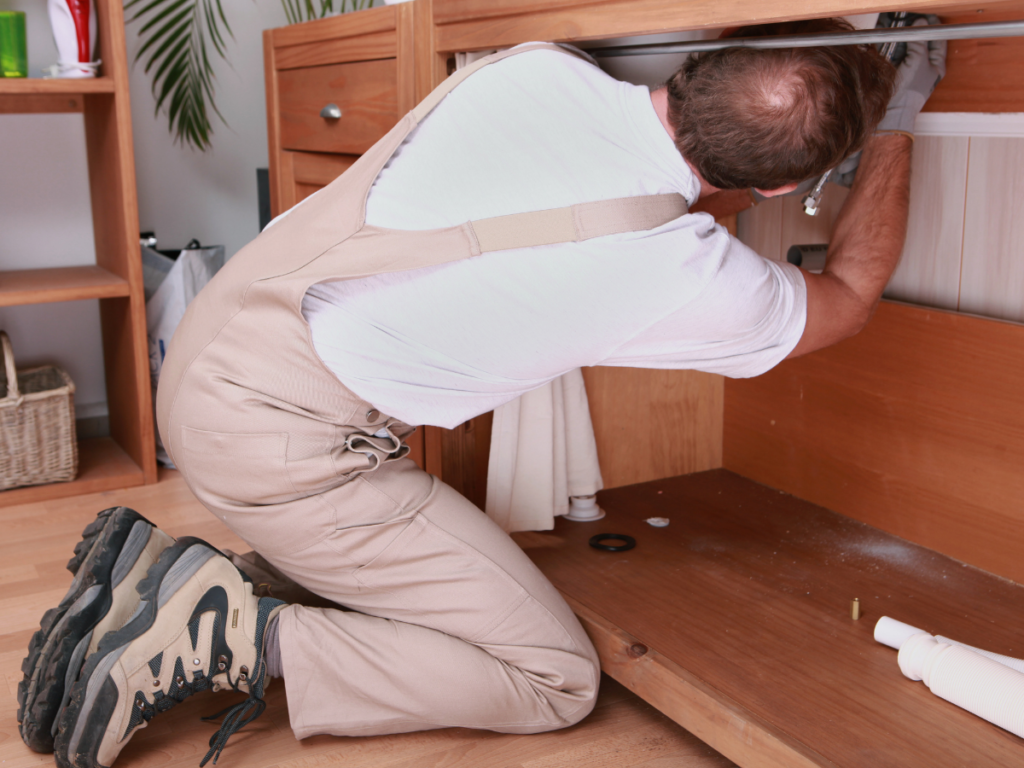
Knee bursitis is irritation of the bursae in and around the knee – there are actually 11 bursae associated with the knee joint!
Bursae are thin sacks filled with lubricating fluid. They function to help reduce friction between adjacent structures i.e., bones, tendons, muscles and skin. Bursae do a great job of facilitating the movement of the knee, but the irritation of these structures can sometimes result in pain and swelling above, below or behind the patella (kneecap).
Three bursa that can commonly become irritated are:
Prepatellar Bursa
(above kneecap)
Prepatellar bursitis is most often seen in people who are frequently kneeling, as the bursa can become irritated.
e.g. plumbers, carpet layers, gardeners.
Infrapatellar Bursa
(below kneecap)
Infrapatellar bursitis often causes pain just below the point of the kneecap.
Repetitive jumping is a common cause of irritation of the infrapatellar bursa.
Suprapatellar Bursa
(above kneecap)
Suprapatellar bursitis can be triggered by acute trauma or repeated microtrauma.
More severe cases can be a result of direct trauma to the bursa from falls and overuse.
Symptoms of Knee Bursitis

Knee bursitis commonly causes swelling, the specific area depends on which bursa is affected. There may be increased redness and warmth around the knee as well as limited and painful movement.
Causes of Knee Bursitis

Knee bursitis can be caused by direct trauma to the area, frequent falls on the knees, or prolonged pressure on the knee, usually from repetitive or extended periods of kneeling.
Symptoms can be aggravated by kneeling, crouching, repetitive bending, or squatting.
If you begin to experience a fever in conjunction with the other symptoms, please see your GP or your physiotherapist as soon as possible.
How to diagnose Knee Bursitis
Working with your physiotherapist, a comprehensive history, coupled with a thorough physical examination, are the first steps in diagnosing knee bursitis.
If your GP (or physiotherapist) is concerned about infection, your doctor may organise for a sample of the bursa fluid to be extracted (known as aspiration) and tested.
Treatment options for Knee Bursitis

Knee bursitis can go away on its own if the aggravating activities are avoided. However, if the symptoms persist, or you are not sure what the problem is, physiotherapy can be very effective in helping reduce the pain and swelling and help to make sure you are addressing any contributing factors.
Your doctor may discuss anti-inflammatory medication with you or other options such as injection procedures – but for most people, this is not required.
Home treatments for Knee Bursitis
For mild, non-infectious cases, the following can be used to relieve pain and swelling:
- Rest and avoiding activity that cause strain on the knee e.g., repetitive kneeling, prolonged positions.
- Cold compress on the area to reduce swelling. Try 20 minutes, two to three times a day.
FAQs
How can I prepare for a physiotherapist appointment?
A physiotherapist will want to understand your area of concerns by discussing any factors that may contribute to your pain or immobility.
It is recommended that you note down any symptoms you are experiencing and when they began, your personal and family medical history, current medications, and any questions you might want to ask during your appointment.
What can I expect when seeing a physiotherapist?
A physiotherapist may conduct a physical examination of your area of concern, discuss your day-to-day activity and medical history, and prescribe a treatment plan for recovery.
When should I see a physiotherapist?
A physiotherapist can help you to reduce or manage pain and immobility throughout your body. If your concerns are impeding on your ability to participate in your regular activities, it may be time to see a physiotherapist.
The longer these concerns are left unattended, the harder they can be to treat down the track.
